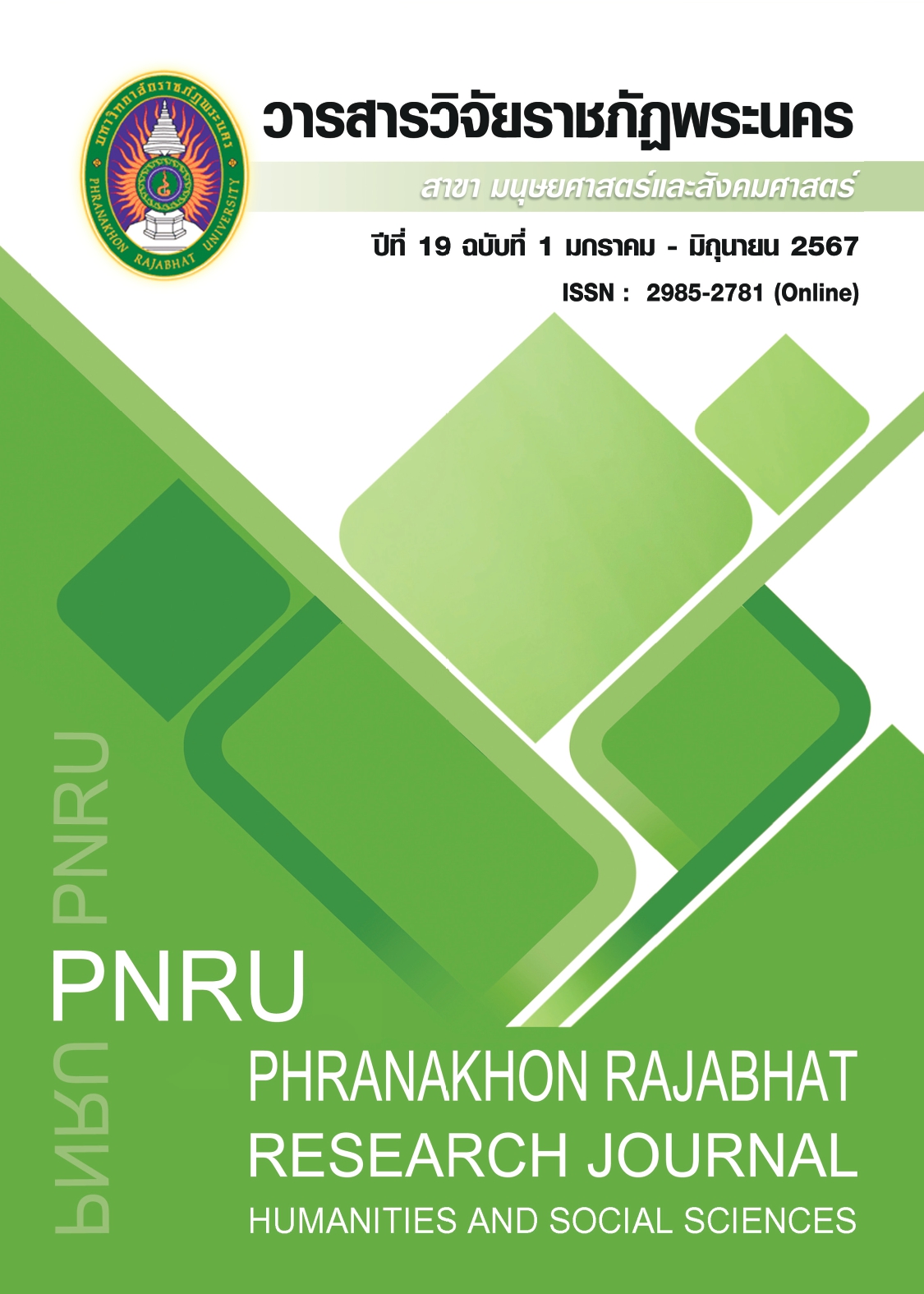GUIDELINES FOR BUILDING INFORMATION MODELING TO EVALUATE EARLY MODERN HERITAGE: THE CASE STUDY OF FACULTY OF HUMANITIES BUILDING PHRANAKON RAJABHAT UNIVERSITY, BANGKOK
Main Article Content
Abstract
Heritage Building Information Modeling (HBIM) is defined as a digital technology process used to present building conservation projects in a virtual built environment by allowing multiple disciplines, including architecture. Engineering and construction (AEC) which can integrate with the local historical context. HBIM manages architectural elements that has specific artistic characteristics and historical background which are embedded in the old building. The research aim is to study the use of building information models to manage heritage information to evaluate the value of heritage buildings. The research methodology includes conducting tests to assess the value of heritage buildings. By modeling information on heritage buildings through case studies that have a modern architectural style from the beginning of the 20th century in Bangkok. In the research, it selected the Faculty of Humanities building in Pharmakon Rajabhat University as a paradigm. The research tests HBIM potential to determine the quality and validity of building information under DOCOMOMO International's criteria for evaluating buildings in early 20th century modern architecture.
Results of HBIM evaluating the value of heritage buildings found that HBIM helps explain and analyze intrinsic values through comparisons between the regenerative information model and the remaining original building case study in 3 perspectives consisting of Technical, social and cultural aspects. Results from the research are beneficial to validating heritage building in science, and help manage modern architectural local heritage and its characteristics.
Article Details

This work is licensed under a Creative Commons Attribution-NonCommercial-NoDerivatives 4.0 International License.
Each publish articles were copyright by Phranakorn Rajabhat University
Any contents which appeared in each articles in the journal were authors personal opinion. It did not relate to Phranakorn Rajabhat University and other instructors in the university. Each authors would take responsibility on their articles. If there are any mistake, the authors will take responsibility themselves
References
A. L. C. Ciribini, S. Mastrolembo Ventura & M. Paneroni. (2015). BIM methodology as an integrated approach to heritage conservation management. The Built Environment, 149, 265-276. doi:10.2495/BIM150231
Ana Regina, Mizrahy Cuperschmid, Márcio Minto Fabricio, Júlio César Franco, Jr. (2019). HBIM Development of A Brazilian Modern Architecture Icon: Glass House by Lina Bo Bardi. Heritage, 2(3), 927-1940. doi:10.3390/heritage2030117
Angelosanti, M. (2021). Representation and knowledge of historic construction: HBIM for structural use in the case of Villa Palma-Guazzaroni in Terni. TEMA: TechnologiesEngineeringMaterialsArchitecture, 7(1), 8-20. doi: 10.30682/tema0701a
Baik, A. (2017). DATA ACQUISITION IN HERITAGE BIM. International Symposium Sustaining Built Heritage (SBH 2017), (p. 26). Luxor. From https://www.graphicslink.co.uk/SBH2017/SBH2017_BookAbstractV1_18Feb.pdf
DOCOMOMO_International. (2015). DOCOMOMO International's Good Conservation and Restauration Practice Fisch เข้าถึงได้จาก docomomo.: https://docomomo.com/.
Fusco Girard, L.; Vecco, M. (2021, March 15). The “Intrinsic Value” of Cultural Heritage as Driver for Circular Human-Centered Adaptive Reuse. (J. C. Marc A. Rosen, Ed.) sustainability, 13(3231), 1-28. doi:10.3390/su13063231


